The Decline of Havana, Cuba
By Vicente Morin Aguado
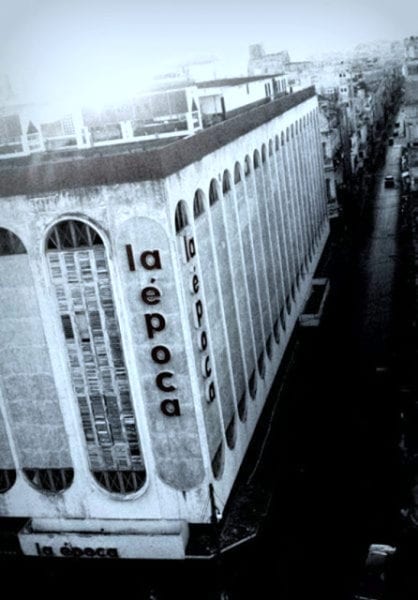 HAVANA TIMES – In the 1950s, it was common for people who lived in the city’s outskirts to say “let’s go shopping in Havana!” whenever they went to Central Havana or Old Havana.
HAVANA TIMES – In the 1950s, it was common for people who lived in the city’s outskirts to say “let’s go shopping in Havana!” whenever they went to Central Havana or Old Havana.
They would head to an impressive congregation of stores selling everything you could possibly imagine back then. Today, only the buildings remain, which are underused or in ruins, witnesses of a past when walls and streets spoke for themselves.
A quick glance at the corner of Galiano (Ave. De Italia) and San Rafael holds onto the remains of what the Cuban capital used to be before it was shot down. There were huge department stores on all four corners: Flogar, which today only has merchandise on the first floor and in the mezzanine; Variedades Galiano, the old Ten Cent store belonging to the Woolworth chain, which also owned another 7 similar stores across the country; Fin de Siglo, which is now closed for renovation work; and El Encanto, victim of sabotage, a fierce fire that destroyed it in 1961.
These, normally 4-story, department store buildings have thousands of square meters of retail space, imitating merchandise and retail techniques which were similar to their counterparts in the United States at the time.
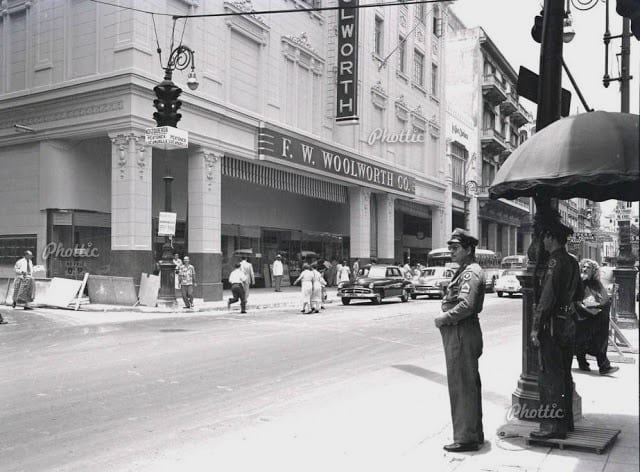
Did Fidel Castro save our country from going bankrupt? The Cuban Revolution is unusual because it holds onto certain Leninist theories, as socialism didn’t reach the island as a result of a general crisis. Seeing is believing, let’s continue on with our stroll through Havana.
Down San Rafael street to be exact, which has been undergoing repairs for a decade now, with the best intentions of creating a pedestrian boulevard which has yet to be completed; the path to hell is paved with the best intentions, people say. We used to see an uninterrupted line of stores, which are in ruin or underused today, and the stores that have been renovated have been converted into hard-currency stores (TRDs), and yet they still don’t rival the merchandise in the stores of 70 years past.
The landscape back in 1955 was very different: Top of the line electrical appliances in Giralt, Longines and Omega Swiss watches, in Cuervo, Sobrino and Bared’s store windows, while J.Valles offered a selection of clothes with the option of buying with credit, which most customers took advantage of. Belinda Modas, Record stores—Puchito, Kubaney and Columbia, were also present, not forgetting El Telescopio which offered modern optician services.
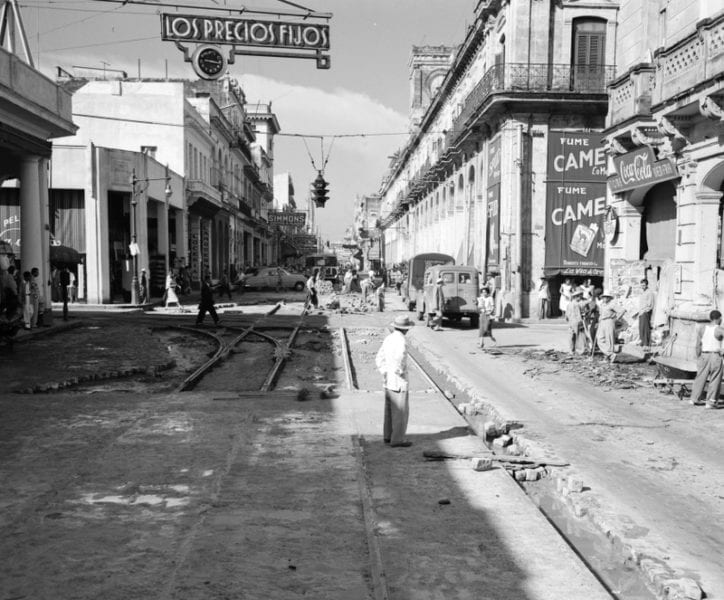
The last block heading towards Central Park is home to two emblematic buildings in the Cuban capital: Hotel Inglaterra and the Grand Theater, an architectural wonder, which was a project by the Havana’s Galician society. Now, we’re walking down Paseo del Prado, towards the Capitolio, ending up on Calzada de Monte, whose official name pays tribute to the Liberation Army’s Chief Commander, the Dominican Maximo Gomez Baez.
Monte Street is a long street which used to connect the city within its walls with the surrounding fields back in colonial times, starting in front of Plaza de las Ursulinas and ending at the Intersection with Infanta Street, on the so-called Esquina de Tejas. Then, it becomes Calzada del Cerro, which is connected to 26th Street in Nuevo Vedado, where it continues under the name of 51st Avenue or Calzada de Puentes Grandes, formerly the Calzada Real de Marianao, and then it reaches the Central Highway which takes you straight to Pinar del Rio.
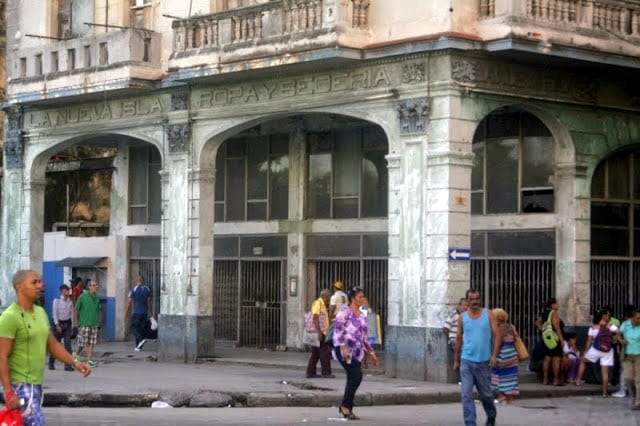
Fernando Pruna Bertot, 82, tells us about his young impressions of the splendors that used to line this important route in Havana:
“The whole part of Monte Street, from Zulueta up to Cuatro Caminos, was impressive. It was practically all stores, starting off in Plaza de las Ursulinas in Old Havana, the great La Sortija store, I remember the … Casa Fraga and El Cadete; the impressive Isla de Cuba store, which used to be the Isla de Cuba luxury hotel; Los Precios Fijos; La Isla; La Nueva Isla; El Gallo; the cutlery store La Sin Rival; countless furniture stores, including La Casa Mimbre; La Defensa; the famous Casa de los Tres Quilos, and of course Woolworths, Monte’s Ten Cent Store.
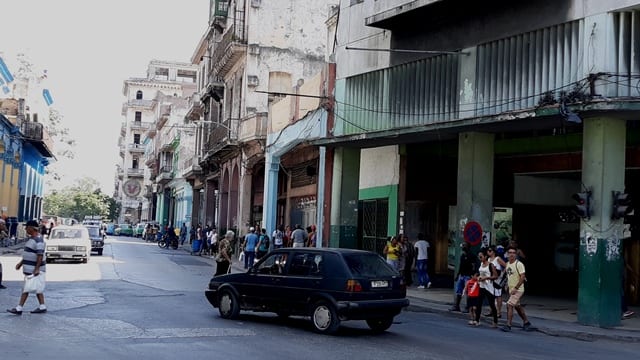
“The doorways were famous because you would always find dozens of street vendors and kiosks selling all kinds of things, from chickens with colored feathers, small turtles, candied apples, to the mountain of thousands of toys in days leading up to Three Kings’ Day, which really buzzed during Christmas time, Valentines Day or Mother’s Day.”
There are still street vendors, and they sell the strangest things. The same person might be selling toilet paper, a pack of candy and even pens. In short, they sell whatever appears.
Many stores have been closed because of building collapses or long-term renovation works, others sell used clothes and average-quality handicrafts.
Many sections of the buildings were seized in the early years of the Revolution, becoming residences and today, they have become small stores owned by private business owners, their owners making the most of their doorway leading out onto such a busy street.
Vicente Morin Aguado: [email protected]






Liked your article because it brings back my childhood memories. My mother was a big time shopper especially at month-end sales and I would accompany her, later to be rewarded with ‘merienda’ at Hotel Inglaterra or at Woolworth’s. My cousin worked at Los Precios Fijos owned by Mr.Shapiro. Also remember Sears with its great home appliances and my Buster Brown shoes. It’s a shame that my hometown keeps falling apart much faster than it can be renovated! I do miss the hustle and bustle and my people!
Actually it’s the communist government that forbids locals from visiting tourist areas, including beaches. Cuban police harass Cuban men if they try to talk with western women. They especially don’t like blacks taking with white women. Modern Cuba practices tourist apartheid. Your comment is nonsense. Nice try though.
Everyones life has to play itself out. Everyone wants to rule the world
Genau!
Nice comeback!
You got it !!!
Nicely put. And to compare it to Haiti is upsurd
You bet it will. It left a wonderful impression on me. Afterall what makes a country is the landscape.
Trumpster
The revolution abolished racism 1959. How glorious ! Why didn’t the US try that, comrade? Despite history of slaveplantations
you people sound like counter revolutioners,why can you not mention the economic blockade imposed by the usa since the dawn of the peoples revolt against imperialism and capitalism,let the usa do stop the blockade,and you will see how the cubans prosper economically,que viva la revolucion cubana,patria o muerte,tu veras,venceran
So true, racism main reason old guard fled to Miami….lol…and now they have to live with Hatians
you have a bunch of idiots, no common sense, stupid thoughts and ideas, wanting a perfect world, not possible, idiots, saying Cuba is better off now than before, these people are evil with an evil intention, not worth arguing with, they know the truth but are afraid of it and racist not of race but of humanity, clouds without water, their END is destruction.
No system is without its own set of problems – no one has devised a system that works everywhere for everyone –
Some countries are blessed with abundant raw materials , good land for crops , minerals etc ; so countries are not equal to begin with ( in their natural blessings ) .
The freedom to choose a government
( democracy ) is frequently common yes most often in prosperous countries , with a few exceptions .
More importantly the freedom to get rid of a government when people choose is also important [ again with only a few exceptions this is the case with the prosperous ] .
This is Cuba’s downfall . And is by far the biggest problem
Havana was stunning pre-1959, notwithstanding the American mafia, rampant prostitution; and, more importantly, the mass of poor Cubans that propped up this beautiful city. To be clear, but for the masses that made up the poor, Havana could not have existed as it did. I know many of you find this reality saddening, … but embrace the truth.
What a stupid, ignorant comment: In 1959 the Cuban population was over 75% white. That’s what you see in the pictures idiot.
@ Ned. “No mention of the socio-economic situation at the time before the revolution” – the article was about shops, FFS. Well how about the socio-economic situation NOW? Are the poor in Cuba any better off than the poor in western capitalist democracies because they have a dictatorship that pretends to care? Human beings are not equal, We are hard wired to compete and aspire for better, which is why communism fails every time. A humane society provides a safety net for those who can’t compete, but to treat all citizens as automatons is a recipe for disaster. As usual, to avoid starvation, the regime has to allow a bit of capitalism to take up the slack – but once the lid is taken off, it cannot be put back. So now a taxi driver can earn more in CUC tips in a day than a neurosurgeon does in CUP in a month. Insanity.
I’m coming to see for myself in November. I love glorious decrepitude, but I feel for the poor souls living behind those crumbling facades.
Oh my dear I’m afrocuban just in case your dated left wing coolAid maje you see Racism where is not.
I just got back from Havana. Most of Central Havana looks like a war zone. Its very sad to see what was such an obviously beautiful city literally rot away.
Ecology and economy often follow the same principles. In ecological restoration, we used to think it was simple–restore natural areas to a pristine, or at least preferred, chosen state. Before such and such happened, before so and so arrived…The more people thought about this, and learned about it, the more it became hard to say what the ‘right’ time period was that we should restore natural areas to. Sadly, one result of that is that many ‘new’ ecologists suggest just accepting the invasive species of the world as the new normal. The same is true in Economics. Initially it seems easy to say that the Cuba before Castro and before the embargo is the Cuba we want to restore. But as seen by the comments responding to this article, it’s not clear when Cuba was in a ‘good’ economic position, or in a good place. Poverty, inequality, corruption, lack or representation…all these existed before Castro, just a different version. Hard to agree on which point in time Cuba should strive to return to. This is one reason people find hope in talking about the future instead of the past. What might Cuba’s government and economy look like in the future…but we can’t even agree in the US about what ours should look like. In our free and democratic republic, are elections pristine? Are our leaders’ actions pure? Are our voices one? Do we still have poverty and inequality and corruption? Sure we do.
How do you know the white Cubans were rich? My parents as well as 80% of Cubans in the 50’s were white and not rich.
Thats all you got to counter the destruction of a nation. Racism?
The folowing countries have been capitalist: Syria, Rwanda, Congo, Brazil, Egypt, Greece, Mexico, Haiti, Nicaragua, Honduras … In short, most of the countries in the world, but have you followed the recently published figures since Thomas Piketty’s monumental work on inequality, Oxfams annual reports, Credit Swiss reports, Branco Milanovic’s research? Have you seen the London School of Economics researcher Jason Hickle’s findings on how the poor countries enrich the developped countries? Have you seen the figures about wage stagnation in the West, even decline of wages in the US if you take inflation in consideration? Have you been reading how the destruction of the environment has been primarily caused by the form of the economic system of the last 250 years? Do you follow how the IMF imposes economic policies and debt enslavement, and how the Arab uprisings began as a revolt against authoritarian regimes implementing IMF and World Bank policies, channeling vast amounts of money to Western banks. Did you follow the 2007-08 crisis triggered by the banks, but governmnet have made the people to pay for it through austerity? By the way, do you know makes most of the stuff around you and in what conditions in Vietnam, Indonesia and Bangladesh? 8 people own more wealth than half of the world population,
It is a superficial article. No mention of the socio-economic situation at the time before the revolution. Poverty was rife. A minority enjoyed the glamour. were the majority of the people living in the cities in 1950s? Wasn’t Havana called a “whore house” for the Americans and Europeans? Wasn’t Cuba a dictatorship under Batista? Does not not capitalism develop unevenly worldwide? Poor countries have no means to have a a strong capaitalist system. Cuba was forced, within the historical conjunture of the time, to have a revolution. A poor, isolated country cannot establish socialism. If the Soviet Union itself did not establish socialism, how could a small island? What about the American-led embargo? Who did it hit? Castro and his entourage or the majority of Cubans? It is the same America that has established an illegal prison on the island, with torture and years of ill-treatment and humiliation of prisoners. Look at the half of the world population living in capitalist countries from Brazil to Russia and from South Africa to Tunisia. Cuba as a capitalist country cannot be the United Arab Emirates or Singapore. Does that mean I am against a change that benefits the majority? Not at all. I do think, like what I noticed in Cuba when I was able to access any website from the Financial Times to marxist.com, sites I couldn’t access in China, the Cuban regime is reformable and that reform should not come from the Obamas and the Trumps and their subordinates. I am pessimistic though given the rise of the far-right and fascistic tendencies in neighbouring countries.
Hospitality is indeed abundant our guide was great, a college grad, who talked freely with our family group. The city remains beautiful though neglected. I am a native of the city who left in ’62 returning twice in 2018 finding neglect even in old Havana which is a UNESCO supported area. I love the people they are friendly even to strangers. Hope you have a good time, bring you own toilet paper.
As a native of Havana I have both sad and happy memories. There was prosperity for some and poverty for many. It was a clean city with street sweepers and trash pick up five days a week. I left in ’62, visited twice in 2018. The difference is stark, now all needs cleaning, painting, repairs. My old neighborhood of La Vibora is neglected with crumbling buildings, streets with much litter and in need of repairs.
Havana still beautiful, a rare beautiful. But the decline of the city should not be showed through the stores…there is a lot of fancy hotels and stores right now (btw they still being for wealthy Cubans or tourist)
The real decline is; not to have plans and developments that a city as Havana require, we r always looking back in the time, instead, we should look ahead to the future, and also compare the present with the other capitals in the area.
Havana hasn’t new buildings or neighborhoods and there is no massive transportation system … and so on …
CAPITALISM; work, development, prosperity.
SOCIALISM; dictatorship, poverty, destruction
Where Capitalism comes war and inequality follows every time. Tell me wherein the difference lies.
Now we are visiting another misconception about life in Cuba before the revolution. Education in Cuba before the revolution was both private and public. Everyone who wanted to study could do so free of cost. However, social promotion as we keep seeing in this country was never enforced. My grandfather taught at the University of Havana Medical School, which never turned down anyone who could not afforded. If you were a good student, you could study there for free with scholarships.
Who ever wrote this absurd article was never lived in Cuba in the glory days before the revolution. I not only lived during this time in Cuba but my parents owned one of these department stores and they had items for people of all financial means. The comment made about Afrocubans and Asians is not true unless this author read it in one of many Communist propaganda literature to criticize the economy in the island. Havana before the revolution had the latest fashions and commodities that were seen in New York, Paris, and Madrid.
Go to Havana. You will see that still has his glamour intact. You won’t regret the experience.
That is an absolute truth.Though I did not live in that Havana,I went to Havana in 1981,age 17 ,to “see it before it disappears”.As decrepit as Havana of 1981 was,it cannot compare to the now LOST city that once was. The views down most streets was still harmonious and very unique as far as cities go.All that geometry and visual harmony is completely gone,noticed in 2017.The remains are painted now in ghastly Third World colors ,in a city that was a Caribbean blend of Rome,Paris and NYC….There are now 5 star hotels offering 2 star quality.The imbeciles that run that shite farm cannot fathom that the cow of FREE ENTERPRISE they killed cannot give milk.I was in Havana in 2017,have people I love there but it is such a disgusting city,I do not know if I will be going back. I will always be Cuban in spirit,knowing full well my family was from a beautiful land that people flocked to.-The only way Cuba is better off than Haiti is to have a look at the remnants of a once functioning railroad system….Latin America’s first railroad in 1837. TRUMP was correct in calling such places what they are.-Enrique Planes,NYC
Where communism comes disaster follows every time.
“from Paris to Haiti” Well, the racism comes through loud and clear. No wonder you left. I’m sure they didn’t miss you.
Thats an absurd statement. Its like saying poor people in Miami dont shop.at Macys. So stupid.
Very true. Whoever knew Habana in the 50s would cry to see what has become.
You can argue about capitalism vs communism, but any argument has to take in account personal self-worth. To argue some people could buy a refrigerator and not mention all the people that could not, often because of race or sex and yet are equal to their peers today, is a broken argument.
One can argue the value of freedom to buy a refrigerator but is that worth more than somebody of African descent who has the freedom to be a doctor today. How do we equate the different forms of inequality.
Everyone talks about the splendor of what Havana once was, but all you have to do is check out some of the old videos available on YouTube to see that it was not for all people. I have yet to see people of colour or Asian decent shopping in any of the fine stores. They were just for Americans and rich white Cubans that did business with them.
Looking back with rose coloured glasses is so easy, but unrealistic. Gracias
We are coming to Havana the end of March and what I’m reading does not paint a pretty picture. Hopefully the architecture and the resilience and hospitality of the Cuban people will make it a memorable visit .
I’m 69 years old and i saw La Havana and it’s esplendor with stores for everyone kind of budget for the riches El Encanto, Fin de siglo, to working class Flogar, Ultra,, Riseland, to the poorest la casa de liquidaciones, las casa de los tress kilos, Woolworth’s and nany others the esplendor lasted until 68 then the whole country become a general aspect of misery. La Havana lost everything its European flavor, its multi ethnicity population, it’s cosmopolitan flavor everything. Now it looks like capital of a province. From the Paris of the Caribian to the new bigger Haiti.